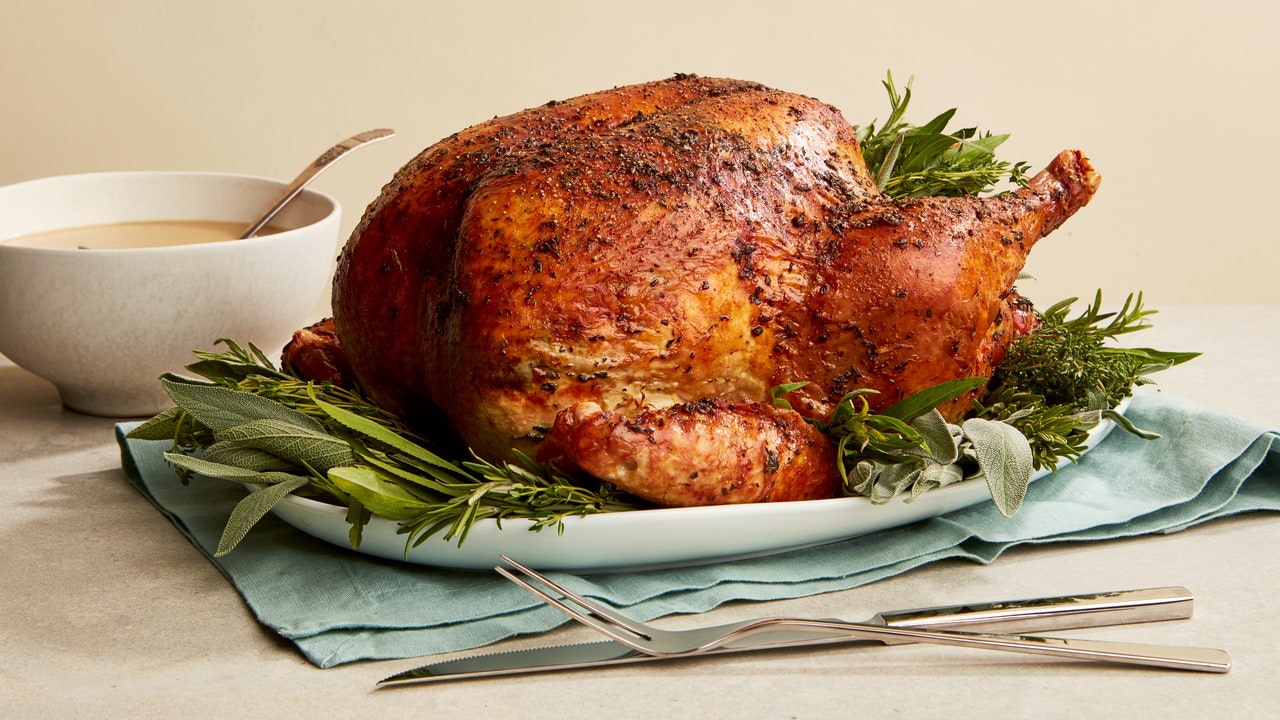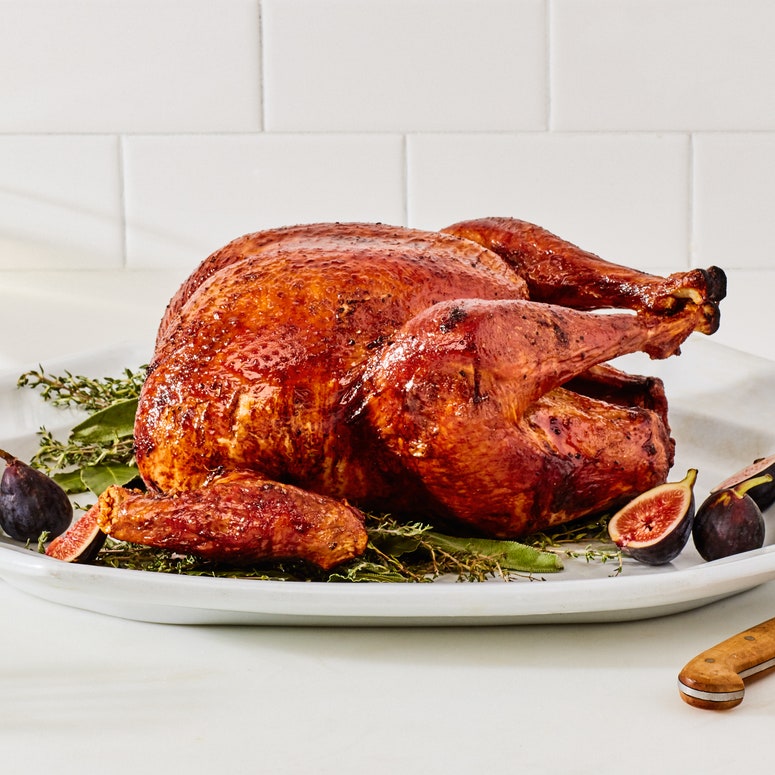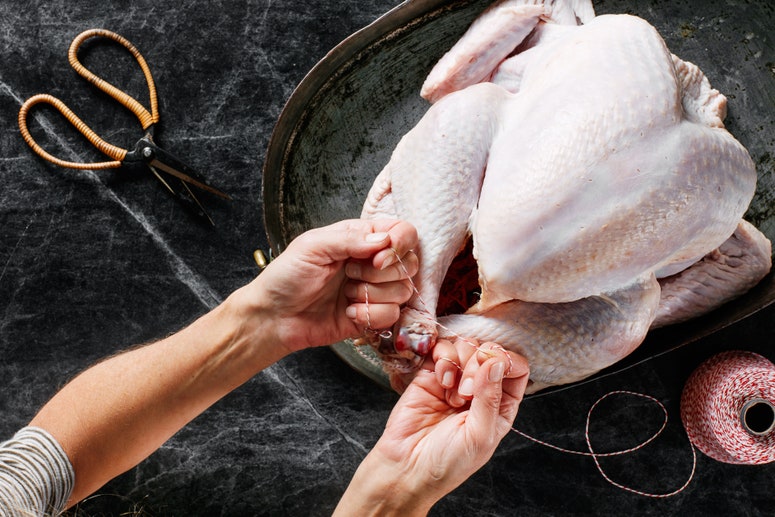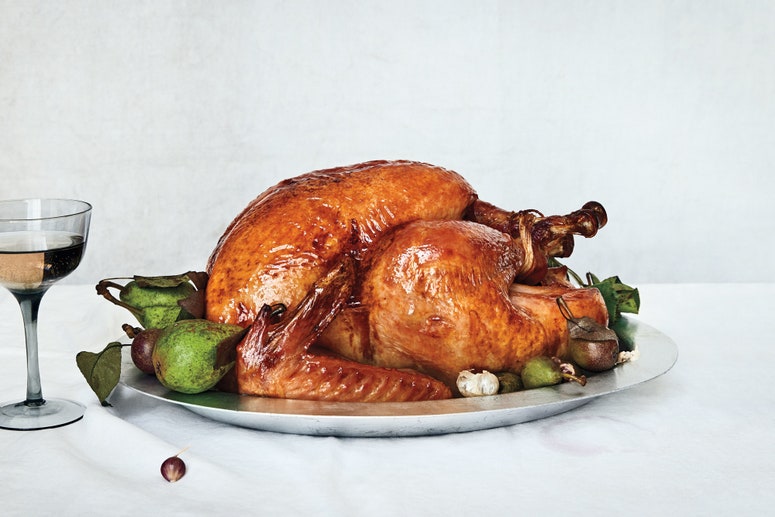To some, turkey is a succulent holiday centerpiece. To others, it’s a vehicle for gravy. But turkey can be great (delicious even) if you know how to cook a turkey properly so that it hits the ideal internal temperature without going over. Whether you’re a longtime Thanksgiving pro feeling bogged down by the year’s newest trend (Is it spatchcocked or dry-brined turkey this year? Turkey breast only? Or maybe confit? We can’t keep up!) or a holiday-hosting newbie who’s preparing a whole turkey for the first time, you can rely on this foolproof guiding principle: You don’t need a special recipe if you just stick to the basics. Ahead you’ll find everything you need to know, including step-by-step instructions, to make the perfect turkey.
In a hurry? Scroll down to get right to our table of turkey cook times. Or scroll even further for our guide to cooking a turkey that’s still frozen solid.
The Simplest Way to Cook a Turkey
The ideal place to thaw a frozen turkey is in the fridge, which can take up to a week, depending on the size of the bird. Here’s how long it takes a typical turkey to thaw in the fridge:
- 4–12 pounds: 1 to 3 days
- 12–16 pounds: 3 to 4 days
- 16–20 pounds: 4 to 5 days
- 20–24 pounds: 5 to 6 days
If you’re short on time, there are other, faster ways to thaw a turkey, but thawing it in the refrigerator is your best bet when it comes to safe kitchen practices. For tips on preparing a turkey for Thanksgiving, click on our guide:
When the time arrives to cook your bird, take the now-thawed turkey out of the fridge and set it on a rack at room temperature for an hour to take the chill off and dry out the skin. (This can be the same rack you plan to use to roast your turkey; there’s no need to dirty another dish.) Your roasting rack should allow the bottom of the turkey to sit at or just below the top of the pan. No roasting rack? A heavy-duty cooling rack set inside a half-sheet pan works too.
Position your oven rack on the lowest rung and set the oven to 350°F. Some recipes have you start roasting the turkey at a high oven temperature for a brief period before lowering the heat for the duration. The belief is that the high heat “sears” the bird and the low heat gently roasts, yielding a bird that’s more moist and succulent, but we haven’t found that this makes a huge difference. Plus, the skin gets browned very quickly (often too quickly). Steady heat means not having to check the oven so frequently, leaving you free to do other things, like prep your mashed potatoes and other Thanksgiving side dishes.
Set your turkey breast side up on the roasting rack and rub room-temperature salted butter—or your favorite flavored compound butter—all over it. (For a 12- to 14-pound turkey, you’ll need about ½ cup [1 stick] of butter.) Slowly work your fingers under the skin, starting at the neck, being careful not to tear the skin or separate it completely at the large cavity. Rub most of the butter under the skin, a little inside the large cavity, and the rest over the skin.
If you’ve chosen to brine your bird (via a wet or dry brine) you can skip this final seasoning. For kosher turkeys, which are already salted, there’s no need to salt the cavity, but you will want to salt the skin. Here’s how to do it: For a 12- to 14-pound bird, sprinkle 1½ teaspoons each kosher salt and freshly ground black pepper in the large cavity and another 1½ teaspoons each over the skin.
Sounds random, we know. But stuffing the neck cavity (not the large cavity) with a halved apple—placing the cut side against the turkey’s flesh with the rounded side facing out—helps buffer the breast against heat and protects it from overcooking. But don’t fill the main cavity with stuffing—it’ll only slow down your cooking time. Instead, prep your stuffing recipe in a casserole dish and bake it on the side.
Not stuffing your turkey means there’s room in the cavity for aromatics, which will add flavor and aroma to the bird and add complexity to the pan drippings used to make gravy. Try placing onion quarters, celery stalks, parsley, thyme, and other fresh herbs inside the turkey before roasting.
You can also place some aromatics right in the roasting pan, under the rack.



